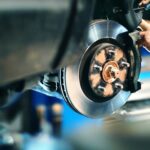Looking to trade in a car that needs repair? Well, you’re not alone. Many people find themselves in a situation where they have a vehicle that requires some fixing up, but they’re ready for an upgrade or simply want to get rid of it. Thankfully, there are options available for trading in a car that needs repair.
When it comes to trading in a car that needs repair, it’s important to consider the condition of the vehicle and its market value. Dealerships typically assess the overall condition of the car before offering a trade-in value. While cosmetic issues like dents or scratches may not significantly impact the trade-in value, major mechanical problems could affect it greatly.
Trade In Car That Needs Repair
When it comes to trading in a car that needs repair, there are several factors you should consider before making a decision. Let’s take a closer look at these important aspects:
Common Repair Issues to Look For
Before trading in your car, it’s crucial to assess the extent of its repair needs. Take some time to thoroughly inspect the vehicle and identify any common repair issues such as:
- Engine problems: Check for signs of engine malfunction, unusual noises, or excessive smoke.
- Transmission issues: Pay attention to any slipping gears or erratic shifting patterns.
- Electrical system faults: Ensure that all electrical components such as lights, windows, and infotainment systems are functioning properly.
- Suspension and steering problems: Test the stability and responsiveness of your car while driving.
By identifying these repair issues upfront, you can have a better understanding of the potential costs involved and determine whether trading in your car is still a viable option.
Assessing the Overall Value of Your Car
Another crucial factor to consider before trading in your car is its overall value. Even if your vehicle requires repairs, certain factors can still contribute positively towards its value. Consider the following aspects when evaluating your car’s worth:
- Make and model: Some brands hold their value better than others due to reputation and reliability.
- Mileage: Lower mileage generally indicates less wear and tear on the vehicle.
- Condition: Evaluate both the interior and exterior condition of your car.
- Maintenance history: Regular maintenance records can demonstrate responsible ownership.
Additionally, researching similar cars currently on the market can provide insight into pricing trends. By assessing these factors objectively, you’ll be better equipped to negotiate trade-in offers.

Understanding the Trade-In Value of a Damaged Vehicle
When it comes to trading in a car that needs repair, it’s important to have a good understanding of its trade-in value. The condition of the vehicle and any necessary repairs can significantly impact its worth. In this section, I’ll delve into the factors that influence the trade-in value of a damaged vehicle.
- Extent of Damage: The extent of damage plays a crucial role in determining the trade-in value. Whether it’s minor cosmetic issues or major mechanical problems, each aspect will be taken into consideration by the dealership or buyer.
- Repair Costs: The cost to repair damages directly affects the overall value of your car. If the repair costs are substantial, it may decrease its trade-in value. On the other hand, if repairs are minimal and affordable, you might get a better deal.
- Market Demand: The current market demand for damaged vehicles also impacts their trade-in value. If there is high demand for salvageable parts from your specific make and model, it could potentially increase your car’s worth.
- Age and Mileage: These two factors always play a role in determining any vehicle’s value – including damaged cars being traded in. Older cars with higher mileage generally have lower trade-in values compared to newer models with lower mileage.
- Overall Condition: Apart from damage-specific issues, the overall condition of your car matters too. Factors like regular maintenance, cleanliness, and general wear-and-tear all contribute to its perceived value during trade-ins.
- Documentation: Keeping records of past repairs and maintenance can help establish credibility when negotiating your car’s trade-in value. Having proper documentation proves that you’ve taken care of your vehicle despite any existing damages.
- Comparison Shopping: It’s always beneficial to do some research before visiting dealerships or engaging in negotiations for your damaged car trade-in process. Compare offers from different buyers to ensure you’re getting the best value for your vehicle.
Remember, the trade-in value of a damaged car will always be lower compared to a similar car in excellent condition. However, by understanding these key factors and taking steps to present your vehicle in the best possible light, you can maximize its trade-in value.







































